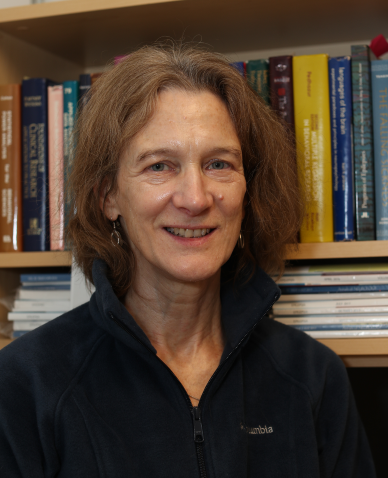Anne T. Berg, Ph.D.

Anne T. Berg, Ph.D., is a Research Professor at Northwestern Feinberg School of Medicine and a member of the Epilepsy Center at Ann & Robert H. Lurie Children’s Hospital of Chicago. Her research has focused on the “natural” history and outcomes of seizures and epilepsy with a specific emphasis on three factors:
- seizure outcomes,
- developmental and cognitive consequences of epilepsies in children, and
- the impact that all of these have on the quality of life of patients and families.
She was also a key researcher in the Multicenter Study of Epilepsy Surgery. Along with Susan Spencer and Barbara Vickrey, Berg contributed to the literature defining the seizure, psychiatric, cognitive, and quality of life outcomes of patients who underwent epilepsy surgery. In 2007, she played a pivotal role in focusing National Institute of Neurological Disorders (NINDS) research priorities on the cognitive, developmental, and behavioral co-morbidities of epilepsy, and she organized sessions at the American Epilepsy Society meeting to investigate these areas and identify research opportunities for improving patients’ outcomes. In 2013, Berg co-chaired the NINDS-sponsored Curing Epilepsies conference and also organized and led the following workshops:
- Priorities in Pediatric Epilepsy Research: Improving Children’s Futures Today, Neurology, 2013
- Seizure Burden in Severe Early-life Epilepsy: Perspectives from Parents, Epilepsia Open, 2019
Currently, Berg spearheads the Precision Medicine Initiative for Epilepsy at Lurie Children’s where she is leading efforts to restructure the electronic health record to support clinical care in the genetic era, reporting, quality improvement, and research. She leads the Natural History Project and the Ability Study, which are aimed at understanding the full effect and range of neurological, medical, behavioral, and other challenges for children and families affected by developmental epilepsies and encephalopathies, including SCN2A-DEE. Her goal is to perform research that provides the necessary evidence to support changes in practice that will improve the diagnosis, treatment, and management of these severe neurodevelopmental disorders and ultimately improve the lives of children and their families.
We interviewed Dr. Berg about her research:
How did you first start collaborating with Simons Searchlight research?
I was initially interested in SCN2A and exploring its difference in children with and without epilepsy. The FamilieSCN2A Foundation has worked with Simons to establish a registry and an observational study over time of SCN2A-related autism and epilepsy.
How have you and your team used information collected from Simons Searchlight families in your projects?
So far, we have mostly worked with the SCN2A group from the observational study. We were able to do an analysis of features and the levels of adaptive behavior in children with and without epilepsy. These results have been submitted to a scientific journal for publication.
What type of data did your team use, and was it associated with a specific gene change?
We have focused on the Medical History Interview forms as well as the Vineland Adaptive Behavior Scales. SCN2A added a separate seizure form, which we have also used. Having these systematically collected and beautifully cleaned data has been such a gift. The variant information is being analyzed separately in Dr. Al George’s lab under a different project. We will collaborate once he has characterized the variants he has and bring phenotype and variant information together.
Have you requested any biospecimens from the registry’s collection to use in your research and how have these samples been utilized?
No. Our group has not done this.
How has using Simons Searchlight data aided in our understanding of the gene changes associated with autism and developmental delay?
The work is clearly on going; however, the extraordinary repository of information Simons has collected and so generously makes available to researchers is a treasure trove. The work being done by the George lab will contribute tremendously to the effort to find treatments for rare disorders.
From a researcher’s perspective, how important is it for families that have rare genetic disorders to become involved in a registry study?
It is the way that discoveries are made that change the way we practice medicine. These conditions (SCN2A, GRIN2B, PACS1, STXBP1 – to name just a few of the conditions covered in Simons Searchlight) are almost vanishingly rare. Performing this kind of large scale, rapid research would be impossible from the clinic. Simons Searchlight brings together people who have exceptionally rare conditions and creates a repository of key elements concerning phenotypes, as well as curated variant information.
What are your future plans for collaborating with Simons Searchlight or using Simons Searchlight data?
I would very much like to pursue further analyses of the Vineland Adaptive Behavior Scales for other rare gene groups. This is an essential part of trial readiness for rare diseases.
I would like to add a special note of thanks to John Spiro, Lee Anne Snyder, Jennifer Tjernagel, and Wendy Chung who have been so collegially collaborative and helpful.
